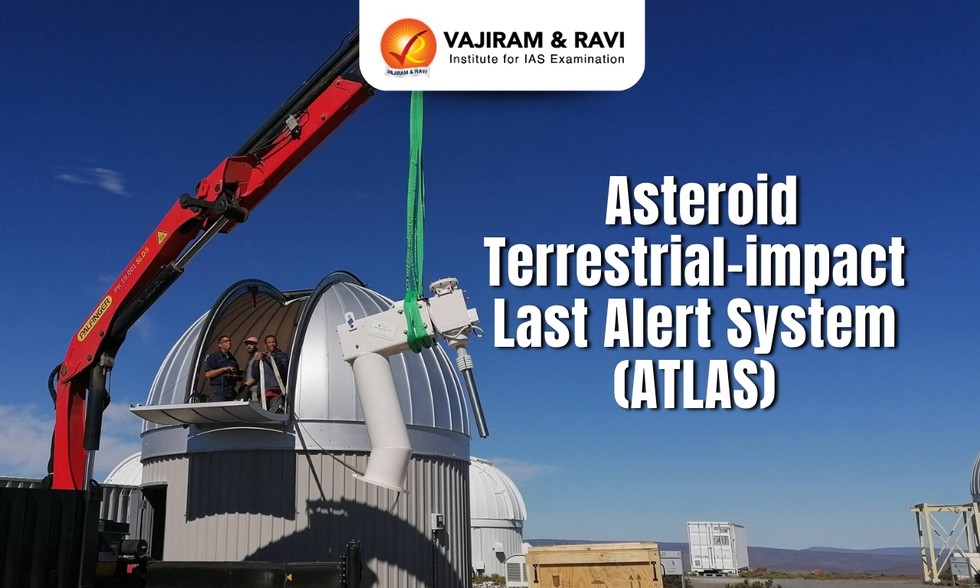About Asteroid Terrestrial-impact Last Alert System (ATLAS):
- It is an asteroid impact early warning system developed by the University of Hawaii and funded by NASA.
- It consists of four telescopes (2 in Hawaii, 1 in Chile, 1 in South Africa), which automatically scan the whole sky several times every night looking for moving objects.
- Although the ATLAS system is also used to identify dwarf planets, supernova explosions, and life exposure remanence from a star being absorbed by a supermassive black hole in a distant galaxy, the main purpose of this project is to search for large “killer asteroids” that may have a tremendous impact on life on earth.
- ATLAS will provide a warning time depending on the size of the asteroid -- larger asteroids can be detected further from Earth.
- ATLAS will see a small (~20 meter) asteroid several days out, and a 100 meter asteroid several weeks out.
- The system is specially designed to detect objects that approach very close to Earth – closer than the distance to the Moon, about 240,000 miles or 384,000 kilometers away.
